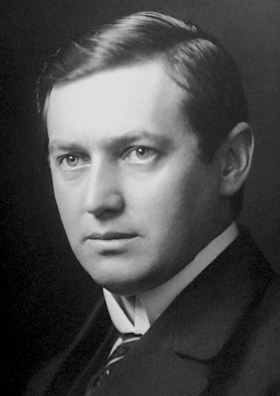
The Royal Swedish Academy of Sciences is one of the royal academies of Sweden. Founded on 2 June 1739, it is an independent, non-governmental scientific organization that takes special responsibility for promoting natural sciences and mathematics and strengthening their influence in society, whilst endeavouring to promote the exchange of ideas between various disciplines.

Karl Manne Georg Siegbahn FRS(For) HFRSE was a Swedish physicist who was awarded the Nobel Prize in Physics in 1924 "for his discoveries and research in the field of X-ray spectroscopy".

Katedralskolan is a public gymnasium in Uppsala, Sweden. The school was, according to tradition, established in 1246. It is the oldest educational institution in Uppsala, and one of the oldest in Sweden.

Litteris et Artibus is a Swedish royal medal established in 1853 by Charles XV of Sweden, who was then crown prince. It is awarded to people who have made important contributions to culture, especially music, dramatic art and literature.

The Department of Physics in Lund is a department that belongs to both the Faculty of Natural Sciences and the Faculty of Engineering at Lund University. The main goals are to expand the understanding of physics, its applications and to share scientific progress to new generations. Research is conducted in most of the physics subdivisions. The department also offers courses and a Masters's degree programs in pure physics and provides physics education for the Master of Science in Engineering programs.
Samfundet De Nio is a Swedish literary society founded on 14 February 1913 in Stockholm by a testamentary donation from writer Lotten von Kraemer. The society has nine members who are elected for life. Its purpose is to promote Swedish literature, peace and women's issues. It mainly presents a number of literary awards. It was started as an alternative to the Swedish Academy and is often compared to its more noted cousin.

The Nobel Committee for Chemistry is the Nobel Committee responsible for proposing laureates for the Nobel Prize in Chemistry. The Nobel Committee for Chemistry is appointed by the Royal Swedish Academy of Sciences. It usually consists of Swedish professors of chemistry who are members of the Academy, although the Academy in principle could appoint anyone to the Committee.
The Nobel Committee for Physiology or Medicine is the Nobel Committee responsible for proposing laureates for the Nobel Prize for Physiology or Medicine. The Nobel Committee for Physiology or Medicine is appointed by the Nobel Assembly at Karolinska Institutet, a body of 50 members at Karolinska Institutet which is formally a separate body not part of the institute itself. It usually consists of Swedish professors of physiology or medical subjects active at Karolinska Institutet, although the Assembly in principle could appoint anyone to the committee. Other than the five ordinary members, ten associated members are appointed each year, for that year only.

The Prince Eugen Medal is a medal conferred by the King of Sweden for "outstanding artistic achievement".

Gustaf Adolf Ising was a Swedish metrologist, geophysicist, and accelerator physicist.

Anne L'Huillier is a French physicist, and professor of atomic physics at Lund University in Sweden. She leads an attosecond physics group which studies the movements of electrons in real time, which is used to understand the chemical reactions on the atomic level. In 2003 she and her group beat the world record with the smallest laser pulse of 170 attoseconds.

Events from the year 1912 in Sweden.
The Björkén Prize is a scientific award given by Uppsala University. It is awarded for outstanding research in science and the theoretical branches of medicine. The prize was established in 1893 from a donation given by university lecturer John Björkén (1833–1893). Björkén was a physician and medical assistant professor in surgery and obstetrics at Uppsala. The prize was first awarded in 1902 on the day of his death.











